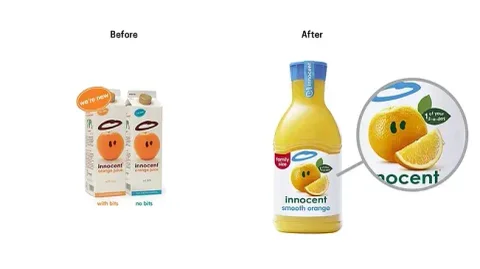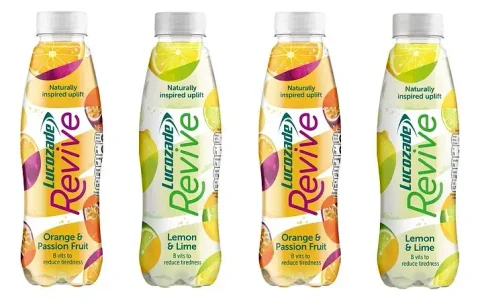Why food and drink brands are in the sensory entertainment business
When a modern human walks into a store and chooses a snack, they do so in the confidence that it won’t kill them. This is because the last hundred years of food regulations have made our food safe. If, like our ancestors, we chose instead to forage for our food in woodlands, we would need to be able to tell the difference between the edible mushrooms and poisonous toadstools we encountered. The complex, high risk nature of foraging, a key source of food for millenia, has led us to develop subtle sense organs that can detect the difference between tasty nutrition and bitter poisons. Along with this, over time we’ve built up a set of cultural rules about what is edible, passed on from generation to generation.
In the Science Museum there’s an entertaining model showing a human figure, in which each part has been resized to show the number of nerve endings attached to it.

Sensory Homunculus and Motor Homunculus sculptures at the Museum of Natural History, London, based on the cortical homunculi mapped by Dr. Wilder Penfield. Photographed by Dr. Joe Kiff. Wikimedia Commons.
This image demonstrates the extent that we’ve evolved to identify and evaluate the stuff we’re eating, with a disproportionate number of our nerve endings end up in our mouths. The high risk nature of our ancestors’ food quest has shaped our bodies to evaluate our food and drink in extraordinary detail. This genetic inheritance is what makes food and drink such a compelling source of entertainment for human beings.
Much of our work at Huxly is the development of marketing strategies for drinks and snack foods. Often, we’re asked to understand the emotional and functional needs sought by consumers at the moments when they eat or drink the categories in question. There are quite a lot of occasions where there isn't a clear rational or emotional reason for snacking behaviour, beyond the desire for a bit of excitement. The typical day of a typical human being in 2020 tends to involve quite long periods of doing repetitive tasks for other people. When we reach for a bag of Chilli Doritos we’re actually buying a few minutes of stimulation for our highly developed, under used, sensory organs, creating some sensory fireworks to escape the white noise of the modern office. And of course, we’ve developed a wide range of sensorial distractions, from hot cups of coffee to cigarettes, that help us to punctuate our day, and mark the passing of time.
We’ve also become very good at using our sensory organs to mark events. In the UK, if Christmas arrives without mulled wine and mince pies, do we really feel the Christmas spirit? If Thanksgiving passes without Pumpkin Pie, do we feel thankful? Our food and drink choices are important cultural and psychological mood music, linking culture, occasion and state of mind. Without these sensory cues, our enjoyment of many events in life would be limited.
These linkages between sensation and emotion can be intrinsic or learned. Sparkling drinks contain bubbles that move in our mouths and deliver a feeling of uplift and excitement. The intrinsic quality of the drink creates a sensorial impact that delivers an emotion, and consequently champagne is a perfect drink for celebrations. At the same time, we can demonstrate the learned impact of tastes and smell with a simple experiment. If I ask you to think back to childhood, and remember the smell of your mother’s perfume as your parents went out for the evening, I’d bet that you can recall that fragrance exactly. And with that fragrance, you will precisely remember the circumstances and your feelings from the moment. Like a favourite song, the sensorial experiences of food and drink create powerful links to our emotional memories. So any food or drink product will have both intrinsic and learned associations that make them fit with a set of emotional benefits in the mind of the consumer.
But what does all this mean for food marketers? Too often, the sensory elements of food and drink products are ignored when building a strategy. For most categories, marketers will use research to understand the emotional drivers behind product choice, choose an emotional territory, and then briefing pack design and communications based on it . As a result we see brand strategies being created for food and drink products without thinking through the complex sensorial and social impact of the products themselves. A good brand strategy within food or beverage needs to start by understanding the sensorial, social and emotional aspects of a product and how they support each other at the moments when they are consumed. If you do this, you can use your pack design and communications to communicate the right emotional, sensorial and social messages, leading to more coherent and compelling design and communications.
When you get the combination of emotional, sensorial, social and functional benefits right, it can have a powerful commercial impact. In one of my last clientside projects we relaunched innocent juice. Initially launched in a tetra pak, this product was failing and about to be delisted. We recognised that refreshment is a key success factor in orange juice, and redesigned the pack and advertising to put this sensorial benefit at the heart of the messaging. When relaunched, sales grew rapidly, the business was able to invest behind the new, improved mix, and sales grew over 3 years from £1M to £100M.

More recently, we worked with Lucozade on Lucozade Revive. Launched in February 2020, this product faced extraordinary challenges at the start of the UK lockdown, with all launch promotion and advertising disrupted. Despite this, the product is succeeding. We helped Lucozade using our 360 degree co-creation approach, designing the brand, pack and sensory profile in an integrated way. Because the emotional benefit, functional benefit and sensory profile and packaging cues fit coherently, we've helped their team create a new product that is able to thrive, even without launch support. If you'd like to find out more about the unique way we're fusing brand strategy and sensory science to build stronger food and drink brands, get in touch!































